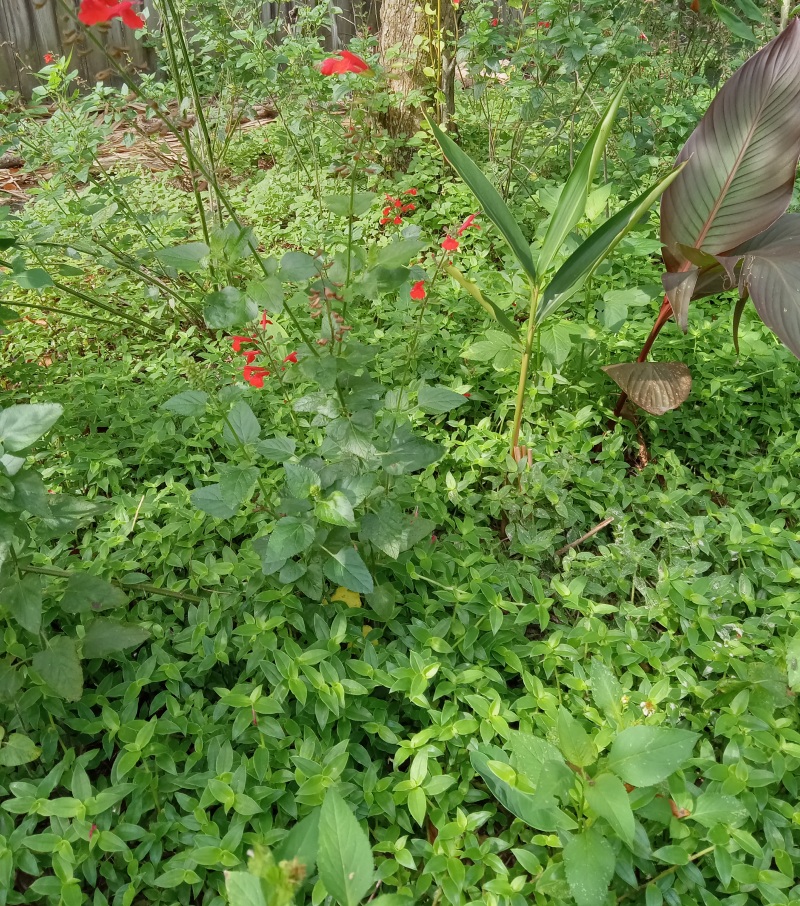Tradescantia fluminensis, commonly known as Wandering Trad or Inch Plant, is a fast-growing, perennial plant native to South America. This versatile plant, with its striking green foliage, is not only a popular houseplant but also an effective groundcover.
Originating from the tropical rainforests of Brazil, Argentina, and Uruguay, Tradescantia fluminensis is a hardy plant that thrives in a variety of conditions. It is characterized by its lance-shaped leaves that grow in clusters along its creeping stems. The plant’s ability to quickly cover ground and its resistance to many pests make it an ideal choice for groundcover.
One of the primary benefits of using Tradescantia fluminensis as groundcover is its rapid growth rate. This plant can quickly cover large areas, providing a lush, green carpet that helps to suppress weeds. Its dense growth habit prevents weed seeds from reaching the soil, thereby reducing the need for labor-intensive weeding.
Another benefit of using Wandering Trad in your Permaculture garden is its palatablility to all manner of livestock. We use it to feed ducks and rabbits, but reports on the internet recommend using it to feed sheep and chickens.
Tradescantia fluminensis is also highly adaptable duebto its creeping nature and fleshy stems and leaves. It can grow in a wide range of soil types, from sandy to clay, and it tolerates both drought and waterlogging. This adaptability makes it a suitable choice for various landscapes, including those with challenging conditions. It thrives in moist shade, and will creep right to the limits of its ability to thrive in area, including hot, dry sand. It has been found at Eat The Sand growing in and across small ponds and wicking beds due to its love for water.
Moreover, this plant is low-maintenance. It requires minimal care once established, making it an excellent choice for gardeners with busy schedules. It can be easily propagated by stem cuttings, allowing for quick and cost-effective expansion of coverage. It is also easy to remove from an area, due to its shallow root system.
However, it’s important to note that Tradescantia fluminensis can become invasive in certain conditions. It has been classified as an invasive species in several regions, including parts of Australia, New Zealand, and the southern United States. Therefore, it’s crucial to manage its growth and prevent it from spreading to natural habitats where it could outcompete native species.
To control its spread, regular pruning is recommended. This not only keeps the plant in check but also encourages denser growth, enhancing its effectiveness as groundcover. Additionally, it’s advisable to plant Tradescantia fluminensis in areas bordered by hardscapes, such as paths or walls, to limit its spread.
Despite its potential invasiveness, when managed correctly, Tradescantia fluminensis can be a beautiful and practical addition to your garden. Its vibrant foliage can add a splash of color to your landscape, and its hardy nature makes it a reliable groundcover option.
In conclusion, Tradescantia fluminensis, with its rapid growth, adaptability, and low maintenance, is an excellent choice for groundcover. However, its potential invasiveness requires careful management. With the right care and attention, this versatile plant can provide an attractive and effective groundcover solution for a wide range of landscapes. It is one of the best groundcovers for a Floridian Permaculture Food Forest.
